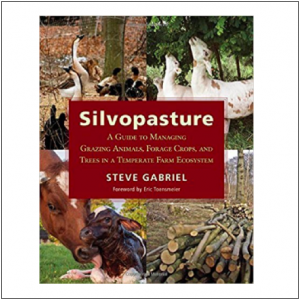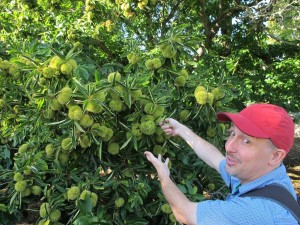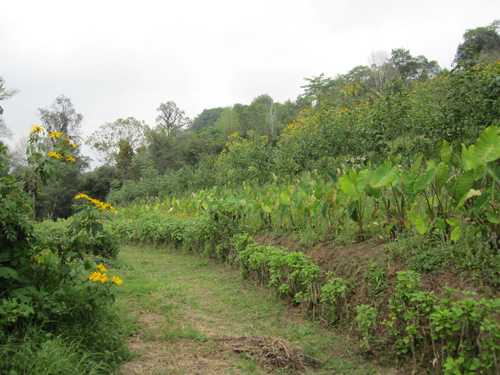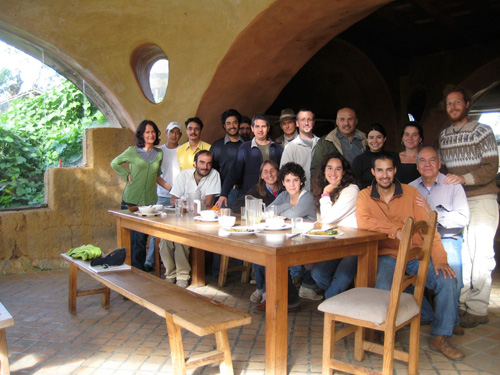Ecosystem mimicry is one of the concepts at the heart of permaculture. The food forest or edible forest garden, for example, strives to replicate the structure, relationships, and successional pathways of natural forest ecosystems. I’m fortunate to have had the chance to travel and teach in different regions and ecosystems. In many cases I return and teach on the same site every year. This gives me a chance to get to know the ecosystem deeper and deeper, and try experiments and see what happens.

One experiment I’m looking forward to checking in on is an attempt at ecosystem emulation that I made along with the team at Earth Learning in Homestead, Florida last spring. Their food forest, while blessed with a subtropical climate and abundant rainfall, is on absolutely terrible soil. Just below a centimeter or two of soil is “coral rock”, a porous limestone bedrock. Though it is relatively easily chipped away with a pick or an iron bar, it is probably the worst soil of all the many terrible soils I have ever planted in.
Yet not far from the farm, several kinds of ecosystems are thriving on coral rock. Mario Yanez of Earth Learning is very knowledgeable about the ecosystems of the area, particularly the nearby Everglades National Park. Two distinct terrestrial ecosystems on coral rock occur in the Everglades.
Where fire is present, pine rocklands dominate. This ecosystem is characterized by a near monoculture savanna of slash pine trees (Pinus elliottii) with a highly diverse understory of shrubs, palms, grasses and legumes. This ecosystem is disappearing in South Florida due to fire suppression. The diversity in the understory is very high, and small edible fruits like stoppers (Eugenia spp.) and blueberries (Vaccinium spp.) abound, if you look under the leaf litter there is almost no soil above the rock. Somehow these species have learned to prosper in difficult conditions, as long as fires burned through occasionally.

The other ecosystem that grows on rock land is tropical hardwood forest. These habitats, dominated by mahogany trees (Swietenia mahogany), feature an intermediate level of diversity in the tree layer but virtually nothing can grow in the dense shade beneath. By maintaining a high level of moisture in the understory, these forests make themselves highly resistant to fire. Most interesting to us–they feature a rich soil high in organic matter built right on top of the rock.

What’s most interesting is that every tropical hardwood forest began as a pine rockland. What happened? The absence of fire makes all the difference. In the absence of fire, woody plants quickly colonize pine rockland. Most abundant is the nitrogen–fixing legume wild tamarind (Lysiloma latisiliquum). This species, native from Florida and South through Mesoamerica, seeds in heavily and grows quickly, shading out the understory and creating conditions favorable to the germination and growth of tropical hardwood species. It also begins the soil building process that results decades later in the rich chocolate cake that underlies an Everglades tropical hardwoods grove.

In last year’s course, we were guided through the Everglades (battling intense mosquitoes) and were able to visit examples of each of these habitats, observing the notable species and checking out the soil profile as we went. We were even able to visit a demonstration area that showed a gradient from fire–managed to fire–suppressed rockland and could see the amount of Lysiloma increasing dramatically as the years without fire accumulated.
Lysiloma is an interesting species and a classic “pioneer” in that it requires full sun and it will not coppice. Once it has played its role well enough that the hardwood species it nurtured have overtopped it, it dies out. Some other legumes, like coral bean (Erythrina herbacea), can coppice and persist in partial shade. Understanding these aspects of a plant’s niche make it easier to incorporate or mimic in a food forest.

In this case we aimed to go as close to nature as possible. Not only did we want to find plant communities that built soil on rockland identical to that on which we were planting, but we wanted to use the same exact native species, to most closely mimic the successional and soil–building dynamics of nature. We planted out some Lysiloma and Erythrina between our fruit trees in one corner of the food forest, in the hope that the Lysiloma was would grow quickly, and that when they shaded out the fruit trees they can be cut down and would not resprout. Meanwhile the Erythrinas could be coppiced indefinitely and would persist into the shadier phase of the food forest. We are also hoping this year to add some eastern gamma grass or Fakahatchee grass (Tripsacum dactyloides), a vigorous clumping native grass high in carbon, with the hopes that we can chop and drop coral beans and Fakahatchee grass to lay down the proper carbon to nitrogen ratio in the understory to build compost right in place, using the natural process and native species but putting it on steroids.

We’ll be doing the course again this April if you’d like to come down and continue our experiments. We’re also playing with lots of other strategies, from livestock to cover crops to intensive fertilized understory cash crops as management strategies for the 500 fruit trees that are in the ground.










